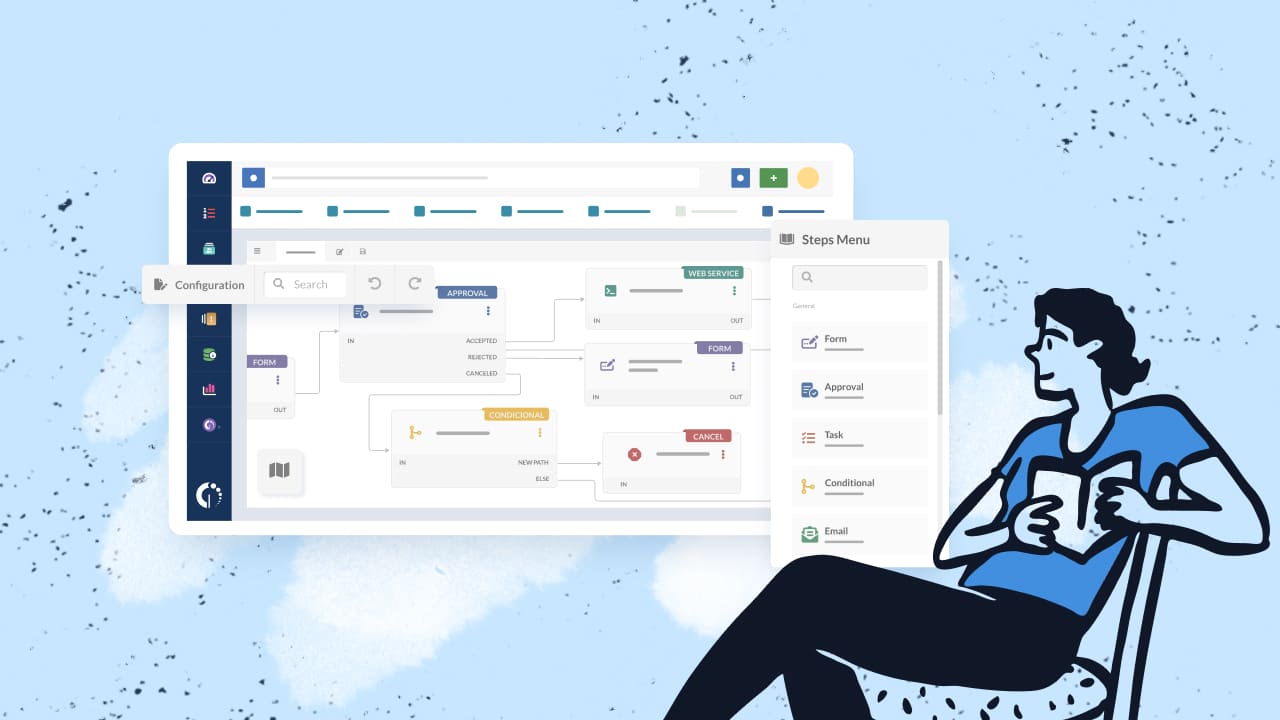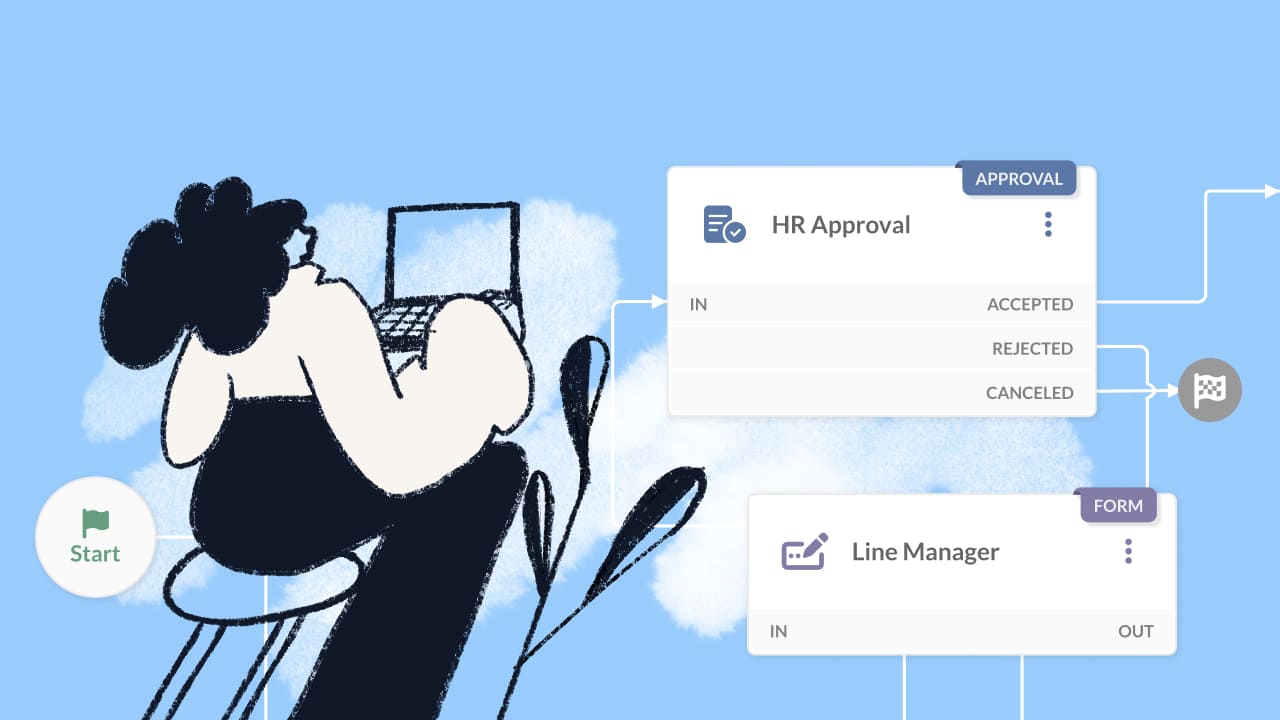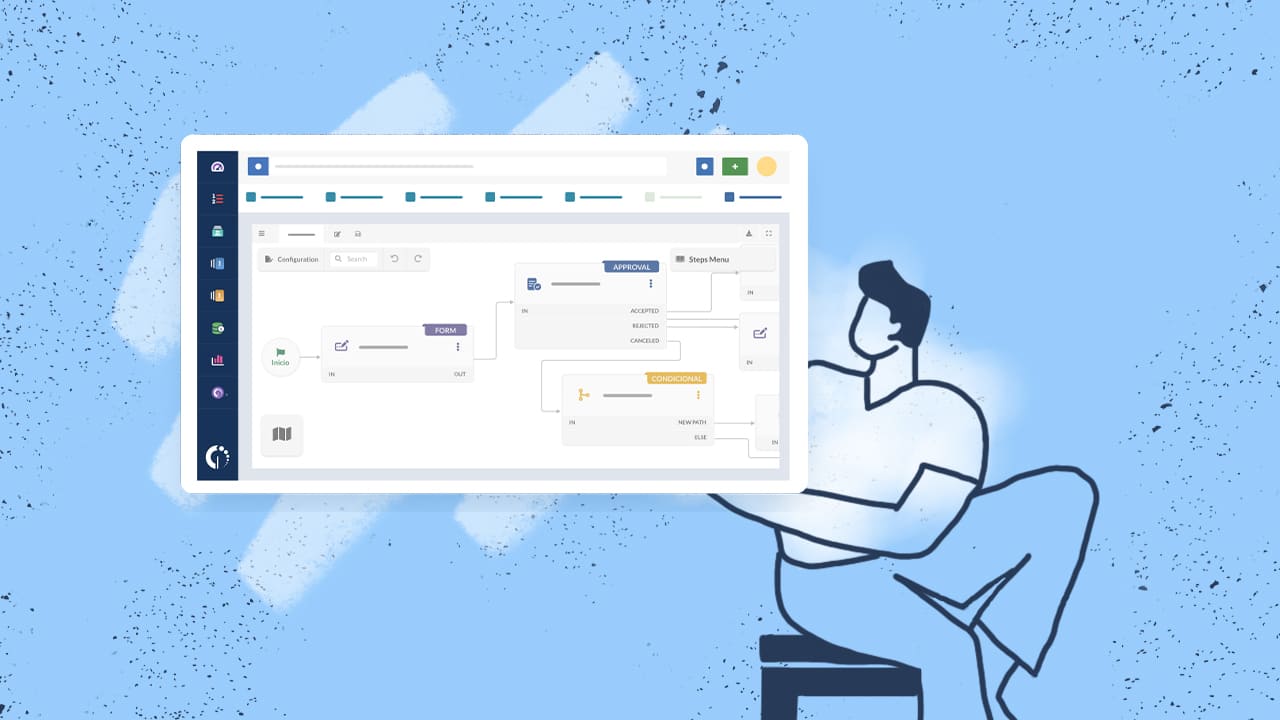In the never-ending quest to improve everything about service delivery, one word rings out louder than others: workflow automation. And that’s because Workflow Management, in particular, offers plenty of rewards in terms of efficiency and quality that you can start reaping right away.
Gone are the days of having to handle every little menial task manually, wasting valuable time and money. Now, it’s all about optimizing what is ripe for improvement, from the smallest task possible, and building effective systems from the ground up. In short, then, here’s how workflow tools can give you a leg up in this process.
Repetitive, low-effort tasks have been part of every professional’s life at the office for time immemorial. But, the thing is, when they’re coupled with other more important jobs being left on the “to do” list, they can make even the most loyal employee fume. The result is them either leaving the important stuff for tomorrow because they had to micro-manage a million small chores, or watching the pile grow ever-bigger. Workflow tools try to fill in this gap with the best that modern technology can offer.
For this, ESM tools — a key component of Workflow Management — can help whittle down that pile to nothing.
Here’s how.

What are workflow tools?
Workflow tools are designed to assist in every possible area of Enterprise Service Management (ESM). The idea is to automate common business processes while requiring less coding and programming than other tools. So, this allows them to be more accessible by those closest to business processes, rather than only by specialists.
The idea behind these tools is to provide a way to channel a project’s flow from start to finish. And a reliable workflow tool will clearly outline each task that needs to happen along the way.
The result is that you don’t jump into half-formed, inchoate projects; rather, each project is defined clearly, which helps reach successful outcomes faster.

Another way these tools help with Project Management and the general business process is by providing visual aids. As workflow tools are meant to provide accessibility first, they can — and should— provide clear layers of structure and visibility.
And, of course, workflow automation can help make this process leaner, meaner, and faster:
“Any procedure or process that can be documented as a set of repeatable steps can be automated. When service desk personnel are repeating the same answers, responses, and fixes again and again, they are not doing more creative, productive, human work; for instance, updating and adding to the knowledge base, working on projects, solving problems, and communicating with colleagues and customers.”
But, before we get ahead of ourselves, we should evaluate the role of Workflow Management in this equation.
The role of Workflow Management solutions

Management software, as part of any ITSM or ESM solution, gives you an added layer of visibility, structure, and automation to workflow processes. In turn, you can get an idea into production faster.
Another way these tools will give you a leg up is by:
- Setting out the workflows and assigning tasks.
- Using automation in any and all of these processes to alleviate human workloads.
- Increasing collaboration among team members and between teams.
- Making workloads far more manageable.
- Allowing you to create and share documents faster.
- Making progress evaluation something clear and easier to visualize — and therefore, follow.

Companies choose InvGate Service Management for it's no-code workflow editor, which provides all users (regardless of having advanced technical knowledge or not) to leverage the benefits of workflow tools.
In just a few steps, by dropping and dragging its main elements and customizing it to their needs, different teams (HR, Facilities, IT, etc.) can build robust workflows.
How to leverage workflow automation
And, of course, a special shout out to workflow automation that brings tremendous opportunities to the fore. The growing capabilities of automated workflows, coupled with increased availability of data for decision-making are making processes far more efficient than they used to be.
With good ITSM tools that leverage automation, the sky’s the limit, and there’s a huge amount of Business Process Management software that can help teams create optimized workflows.
But, of course, not everything can (or should) be automated. It's important to select the tasks that will bring value to your organization when automated, and maintain human intervention where needed.

Areas that are ripe for automation
For our money, when it comes to workflow management, here are some ideas that seemed to turn out extremely well.
- Employee onboarding.
- Employee offboarding.
- PTO and vacation requests.
- Inventory Management.
- Contract Management.
- Customer feedback collection.
- Social media posting.
Of course, this doesn’t mean that these tasks are worthless. But, what they are is repetitive, meaning that they take up way more human time than they should. And it’s precisely thanks to automation that we’ve been able to put time back in the hands of workers. Sounds a bit like a pamphlet you might pick up at University, we know, but it doesn’t make it less true.

Must-have features in Workflow Management software
Now, it’s time to get down to brass tacks. What does Workflow Management software absolutely need in order to call it a success? We’ve cut down the list to what we believe are the most important components. Check them out below.
1. Zero-Code workflow design
We mentioned simplicity as a must-have before, right? And that’s because management software is not intended to be used by software developers, but rather by people on the business side of things.
A simple, straightforward visual workflow editor will make it so much easier for your team to manage without the need of any coding skills.
One of the things your tool should absolutely have, though, is the ability to create workflows with dynamic routing. That is, if the amount for that workflow exceeds a certain amount, the tool will route it over to the pertinent authorities for review.

2. Responsive design
Let’s face it, we’re not working 24/7 on our desktop or laptop computers. Mobile devices are a big part of we live, work, and do business. And that means that every tool worth its salt is going to come with a responsive design that allows you to use it from a mobile device.
The idea is not to have to manage your management tool; if it doesn’t look good or operate correctly on a cellphone, then it’s probably made not with last-decade, but last-century sensibilities. And that’s as big a no-no as wearing a leisure suit to work (although they’ll probably come back in style someday)
This is why good UX is crucial for streamlining things. Gone are the days of having to do things from different devices because not every feature in your management software is supported. Or, at least, they should be.
3. Automatic validations
We’ve all been there: correcting ten million forms because of some tiny mistake. And, even after we’re done correcting, it’s very likely that something slipped our watchful eye. It’s just the way of the world, and the way of human error: you can’t account for everything.
But management software, though, should help prevent those errors 100% of the time. How? Through automatic validations.
There are many forms of validations, though. Here are the main ones to keep an eye out for:
- Custom validations
- Pre-built form fields
- Dynamic validation
- Instructions or placeholders
- Pre-populated fields
- Required and optional fields
- Auto-Dynamic routing

4. Notifications up the wazoo
You shouldn’t ever miss anything. And no, we’re not talking about the Aerosmith song. Missing notifications means missing out on an event, and maybe a potentially important one. While we don’t want to be notified every time someone makes a right-click, you can configure your management tool to give you a heads-up when something truly important takes place.
Most likely, you’ll get an email notification, but you can also use in-app notifications as well. And, of course, using dynamic fields that actually mean something will ensure that the email or notification titles are actually relevant and actionable. Just reading “Notification #313299-B” isn’t going to make any actual difference.
Of course, these notifications should also include helpful reminders, and also escalations when a process expires or reaches a certain stage.
5. Pre-built templates
Every organization, every team, and, of course, every workflow is different. However, customizable templates for certain tasks can save you a lot of time, as you won't have to start from scratch.
You should be able to customize each item so that it can have the type of behavior and features that you need. From checkboxes to multiple-choice options, it should all be covered, and easy to use by even the most techno-phobic employee out there.
Ideally, you want a management tool that can just work with simple drag-and-drop features. And, of course, automation doesn’t mean that your forms should look anything other than sharp.

The bottom line
And there you go! By now you should be well aware of the plethora of benefits that workflow automation tools can bring to your organization's processes across the different departments.
Lucky for you, when it comes to workflow tools, InvGate Service Management has you covered with everything we have gone through in this article. Don't believe us? Check it our for yourself with a 30 day free trial!















